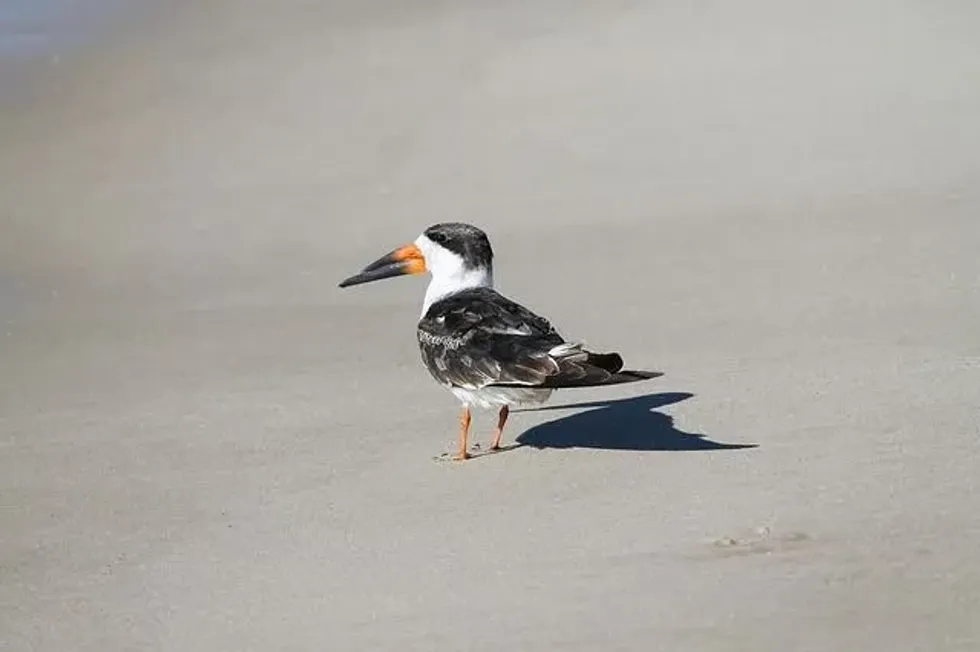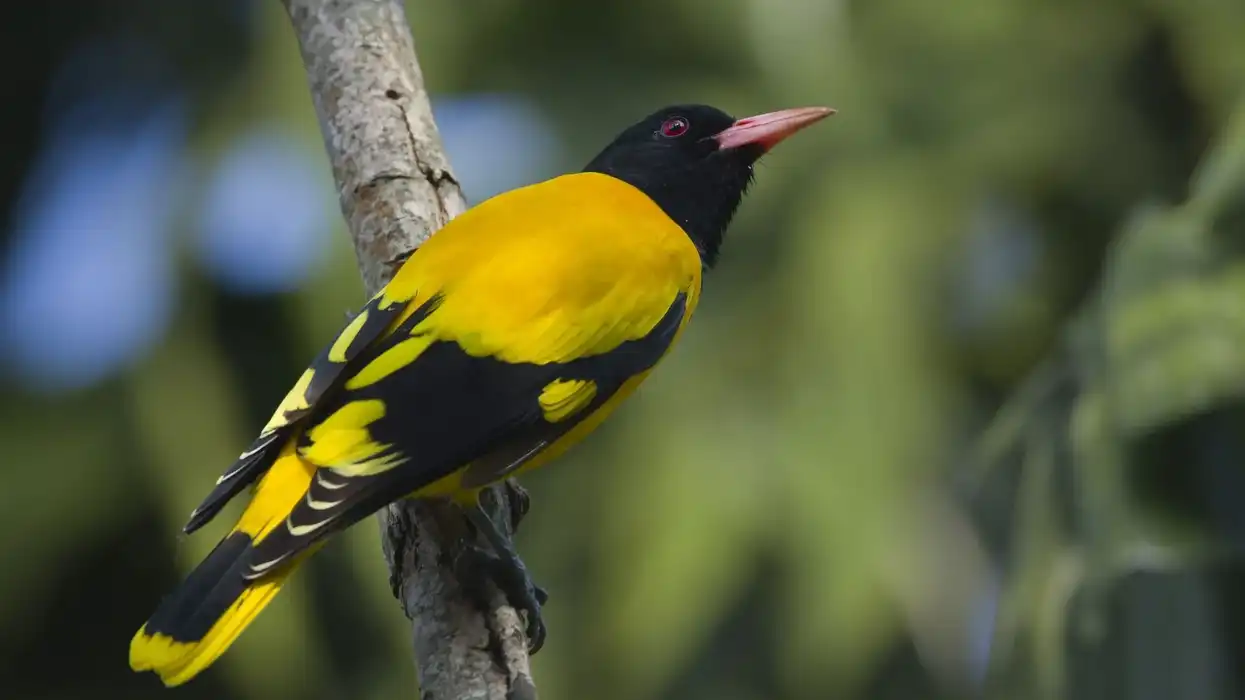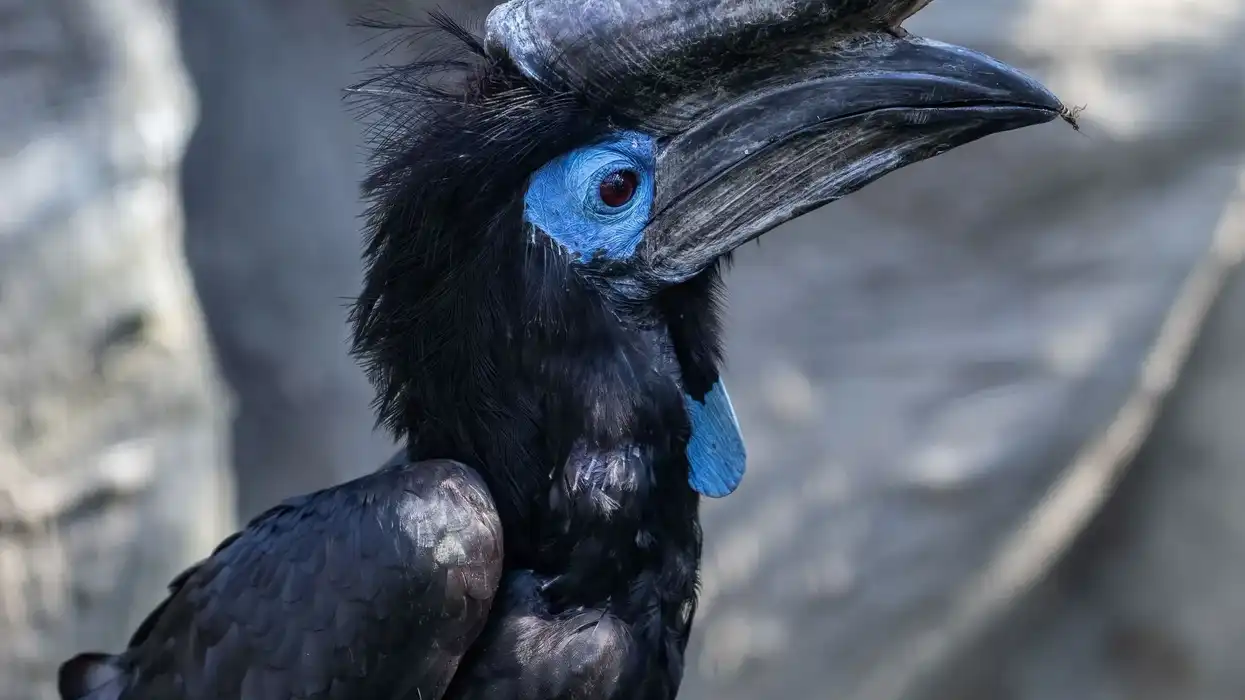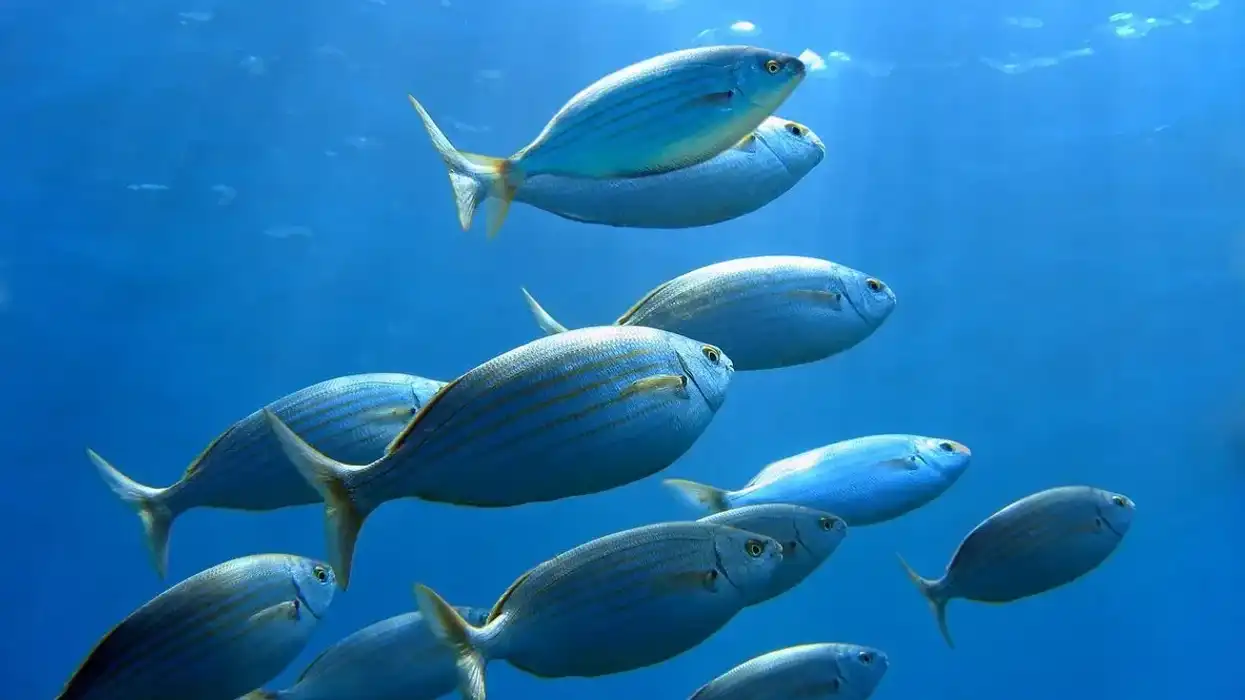Black skimmers (Rynchops Niger) are North American birds who feed on small fishes. These Northn American birds are mostly found in coastal regions in estuaries, inlets, sandy islands, bays, rivers, and lakes.
There are three species of skimmers found in the world known as the black skimmer, Indian skimmer, and African skimmers. These subspecies all belong to the family laridae in the order charadriiformes and are related to terns. This species are the only birds that catch their prey by touching.
They can hunt during dawn, dusk and at night. Black skimmer nesting habitats are along open sandy areas, gravel or shell bars with sparse vegetation.
The conservation status of these coastal birds is listed as Least Concern, and their population is stable. Black skimmer diet comprises mostly of small fishes, insects, crustaceans, mandibles, and mollusks. After reading these interesting facts about the black tailed skimmer, do check our other articles on tawny owl and hornbill.
Black Skimmer Interesting Facts
What type of animal is a black skimmer?
Black skimmers (order charadriiformes, family laridae) are North American birds that mostly feed on fishes and crustaceans. These birds of North America are coastal birds and use their bills to catch fish by feeling them underwater.
What class of animal does a black skimmer belong to?
Black skimmers are birds that are mostly found resting on sandy beaches and anywhere near coastal regions. These birds are well-known for the skimming habit that this species uses for preying.
Climate change and loss of habitat are major reasons why the population of black skimmers is decreasing. Development along the coast resulting in human disturbance is also causing their numbers to decrease.
How many black skimmers are there in the world?
The population of breeding black skimmers in North America is estimated to be between 65,000 and 70,000. The total population of black skimmers living in the wild is currently unknown. Their population status is stable but decreasing due to various factors.
Where does a black skimmer live?
Black skimmers can be found resting near coastal wetlands. These birds feed on small fishes, which they catch in their bill. They have a graceful flight, and nest in colonies. They can be found near coastal regions in the US where they make their nest by kicking up sand to make a hollow space for lying down.
What is a black skimmer's habitat?
Black skimmers can be found near estuaries, sandy beaches, coastal wetlands, swamps, lakes, and rivers. This species can also be found skimming in freshwater during the breeding season.
Black skimmer migration takes place during early spring when the black skimmer birds leave their wintering habitat in the south and start migration along the eastern coast. They prefer to lie down flat on the sand to remain cool.
Who do black skimmers live with?
Black skimmers are tern-like seabirds that live and breed in large colonies consisting of approximately 1,000 monogamous pairs. Few colonies of black skimmers can also be found in inland locations.
How long does a black skimmer live?
The maximum lifespan of a black skimmer is 20 years. The average black skimmer can live for five to 15 years in the wild. Though their conservation status is listed as Least Concern, their population is witnessing a steady decline.
How do they reproduce?
Black skimmers mate for life and live in their colonies forming monogamous pairs. The average litter size of a black skimmer is between one and five eggs.
This species breeds from April to September when the climate is warm. Once black skimmers arrive in the breeding colonies, they establish pairs within a week, and male black skimmers can become aggressive towards other males to protect their mates.
The male black skimmer presents a female with a fish in his bill and then mounts her. Copulation can occur multiple times in a single day.
The color of the eggs can vary from pale cream, white and green to pink spots on dark brown or black. Both the males and the females take care of the hatchlings and feed them for a period of around three to four weeks after hatching from the eggs.
While both the males and females are the same size at hatching, their sizes change during the fledging period. Successful colonies occupy the same nesting site every year.
What is their conservation status?
The conservation status of black skimmers is listed as Least Concern, but their population is decreasing due to climate change, habitat loss, and development near coastal regions.
Black Skimmer Fun Facts
What do black skimmers look like?
Black skimmers have an upper body that is black in color while the lower body and the forehead are white. The tails of these birds are short, and this species has vertical pupils. White spots on the tail are evident.
Their bill is bright red in color and is used to help them catch their prey. The lower mandible of black skimmers is typically longer than the upper mandible by approximately 1-1.5 in (2-3 cm). Their feet are thin and webbed which are bright red and orange in color.
How cute are they?
Black skimmers, or Rynchops niger, are not very cute seabirds. The juveniles are very cute and are guarded and fed by both parents.
How do they communicate?
Black skimmers use distinctive vocalizations and body postures to communicate with each other. Their calls usually sound like "kak-kak’kak". These vocalizations are accompanied by body displays such as head tosses and an upright body posture, as well as walking with open wings.
How big is a black skimmer?
Black skimmers are the largest skimmer species and have a body length and weight larger than African skimmers and Indian skimmers. Black skimmers have an average size of 16-20 in (40-50 cm) in terms of length, and a bodyweight of 0.5-0.8 lb (9.1-13.2 oz).
How fast can a black skimmer fly?
Black skimmers are not migrant birds. This North American bird migrates over short distances. This species can travel up to 5 m (8 km) in order to find food for their juveniles. The exact speed of their flight is not known.
How much does a black skimmer weigh?
The average weight of a black skimmer is 0.5-0.8 lb (9.1-13.2 oz). This species of seabird exhibits sexual dimorphism, which means that black male skimmers have a larger body when compared to females.
What are the male and female names of the species?
There are no distinctive names for male and female black skimmers. These North American birds are commonly called skimmers, and the sexes are differentiated as male and female.
What would you call a baby black skimmer?
Baby black skimmers are called juveniles, hatchlings, or nestlings. Like terns, when they are ready to fly they are called fledglings. Most baby black skimmers are helpless and vulnerable and make easy prey for other birds like hawks and eagles.
What do they eat?
Like terns, black skimmers are carnivorous in nature and eat insects, small fishes, crustaceans and mollusks.
Are they aggressive?
Male black skimmers tend to be aggressive when it comes to defending their territory or protecting their mates from other males. They will give out their usual call to scare an intruder away, but they do not pose any danger to humans.
Would they make a good pet?
No, black skimmers wont make good pets as they are social seabirds and love living with their own species near coastal shores. They have a good lifespan and should be left in the wild to breed and prey.
Did you know...
When males bring females a fish to prepare to mate, the female black skimmers hold the fish in her mouth only swallows it after the male mounts her. This is the difference between terns and black skimmers, where female terns swallow the fish before copulation.
Leaves or sticks can also be presented to the female black skimmer, which will be accepted.
What is unique about black skimmers?
The bill of the black skimmer is uneven and strange. They do not use their vision to locate prey, but instead use the technique of skimming the water. After their bill touches a fish, the upper mandible closes in a fast motion and the fish is caught.
What do black skimmers look like in flight?
They have an elegant flight and can be seen displaying different body postures when they fly. They have a distinctive flight style and fly just above the surface level of the water with long strokes and short downstrokes to avoid any contact with the water.
Here at Kidadl, we have carefully created lots of interesting family-friendly animal facts for everyone to discover! Learn more about some other birds including killdeer, or Nicobar pigeon.
You can even occupy yourself at home by drawing one of our black skimmer coloring pages.










